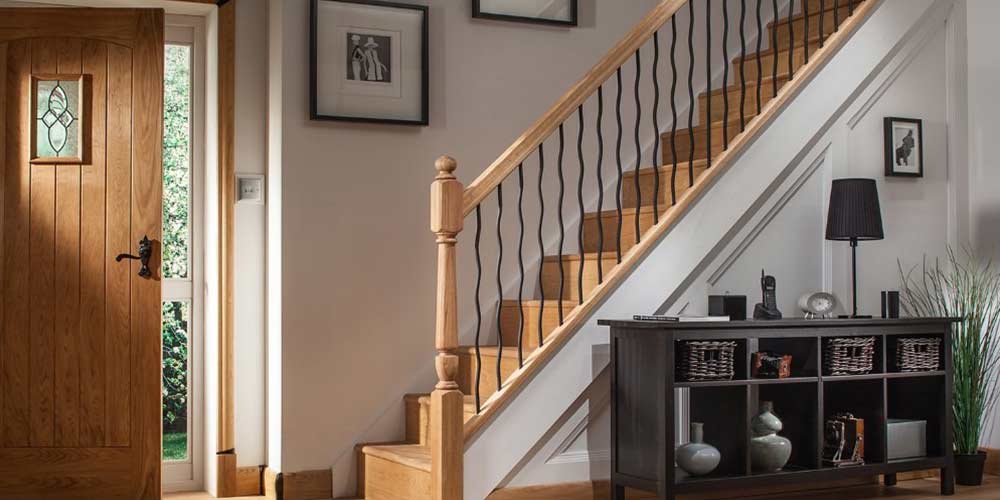A less traditional option than wood and metal, the addition of glass can provide a home with a modern theme. When applied to a balustrade, glass can provide safety as well as brightening up darker areas. This piece will cover the following:
Your guide to glass balustrades
What is a glass balustrade?
A traditional balustrade commonly consists of a handrail, spindles, base rail and newel posts. Glass balustrades feature glass panels to provide the vertical infill between the base rail and handrail, providing an alternative to spindles. This allows light to circulate freely and opens up the space.
The glass balustrade has become extremely popular over the recent years, particularly in modern architecture and elegant interior design. The modern design of a glass balustrade can add an aesthetic element to any home.

Glass balustrade from the Clarity range
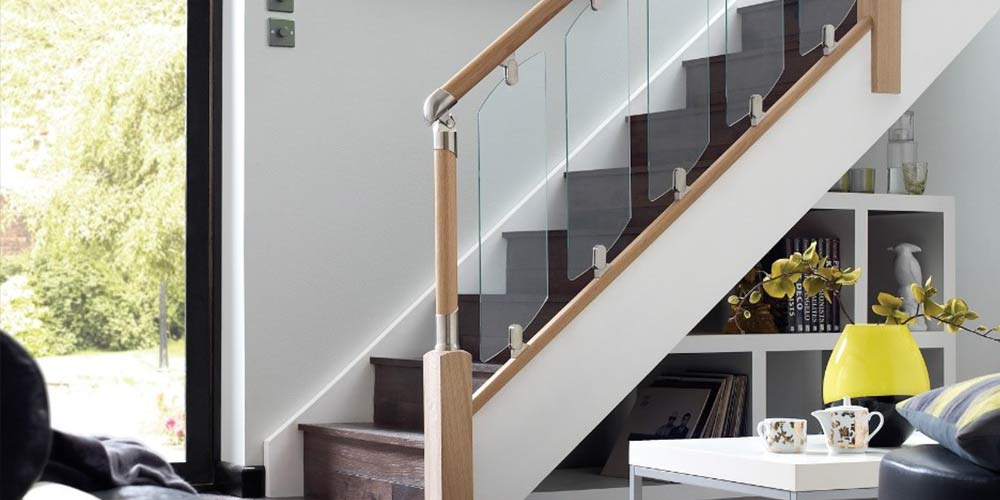
What are the different parts of a glass balustrade?
Whilst glass balustrades often still feature traditional newel posts and newel caps, they feature the following components as opposed to spindles.
Glass panels
Glass panels are designed from toughened glass, which is typically 8mm to 10mm thick. The toughening of glass involves subjecting it to high heat, around 700 degrees Celsius. This process is known as quenching. Toughened glass is often also referred to as tempered glass.
The process of quenching creates a strong layer on both sides of the glass, locking in tensions in the core of the glass. As a result of this, glass becomes four times as strong, providing maximum reliability.
Toughened glass balustrade panels are available in a variety of different sizes and shapes, depending on the style you are wanting to achieve. If you are using a glass grooved handrail and base rail in your balustrade, it is vital to check that your toughened glass panels are of the correct thickness to use alongside them.
Jacksons' Glass Rake Panels

Reflections rake glass panel
This glass panel works well alongside the oak base rails and handrails in the Reflections range.

Immix rake glass panel
The Immix rake glass panel goes particularly well alongside the oak handrails and base rails in the Immix range.

Clarity rake glass panel
The Immix rake glass panel goes particularly well alongside the oak handrails and base rails in the Immix range.

Fusion glass stair panel
This stair panel can be fastened to the handrail and base rail using the glass brackets in the Fusion range.
You can shop our full selection of glass stair panels here.
Jacksons' glass landing panels

Fusion glass landing panel
This panel is designed to go on the landing and can be fastened to the hand and base rail using the glass brackets in the Fusion range.
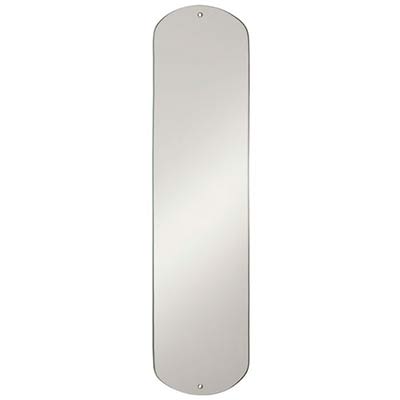
Clarity landing glass panel
This panel can be fastened to the hand and base rail with the glass fixing brackets in the Clarity range.
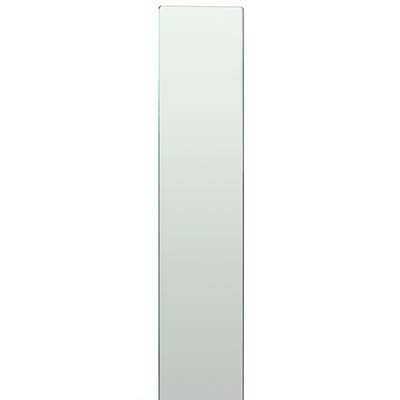
Immix landing glass panel
This panel can be fastened to the hand and base rail with the glass fixing brackets in the Immix range.
Handrails
Glass balustrades can feature either of the following types of handrails:
Ungrooved handrail
On a glass balustrade, ungrooved handrails are designed to be used alongside glass clamps. The glass clamps hold the glass panels in place.
This glass balustrade from the Elements with glass range from Richard Burbidge features ungrooved handrails with glass clamps.
You can shop our full range of ungrooved handrails here.
This glass balustrade from the Immix range features glass panels with glass grooved handrails.
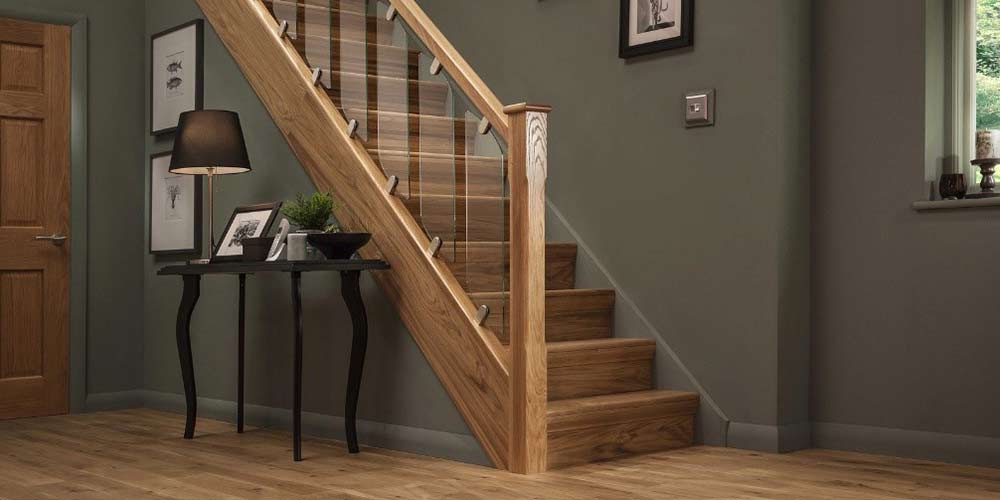
Glass clamps
Glass clamps are typically designed for 8mm to 10mm glass. Our high-quality glass clamps are designed from either brushed nickel or chrome. This glass balustrade fixings option is an alternative to using glass grooved handrails with glass panels.

Square nickel clamp for 8mm glass.

Chrome glass clamp for 10mm glass.
What are the benefits of a glass balustrade?
A glass balustrade provides the following the benefits:
- The addition of glass can create the illusion of more space
- Toughened glass is safe and secure
- A glass staircase is easy to keep clean
- Glass perfectly complements wooden stair parts
- Glass creates a modern, stylish design and is particularly ideal for modern interiors
How thick should glass for a balustrade be?
Glass panels are normally between 8mm to 10mm thick, ensuring it is strong enough to provide an effective safety system. The thickness of the glass you use should also depend on the clamp or glass grooved rails you are using, as they will specify the glass thickness required.
What are the alternatives to a glass balustrade?
Alternatives to a glass balustrade include a traditional balustrade with classic elements such as wooden spindles and newel posts. Metal balustrades are another design option, which provide a stylish contrast of metal spindles and various shades of wood.
To find out more about the different balustrades, you can read more in Your guide to balustrades.


